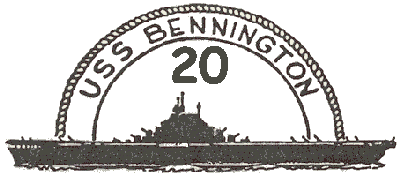American
aircraft carrier awaits `death’ at Gujarat yard
By Tushar Bhatt
SOSIYA-ALANG
(BHAVNAGAR dist)
May 17
1995.
The USS Bennington, billed as the
first aircraft carrier to have been sold for demolition as scrap outside
the United States, awaits its fate at the Sosiya extension of the Alang
shipbreaking yard.
The ship ``was a
full-scale military establishment and a virtually unsinkable one at
that,’’ said Mr Hemant Sanghvi, whose company has bought it to salvage its
recyclable parts and metals.
The ship, which used
to house 3,161 men and officers, arrived here some weeks ago. When in
service, it had several air-conditioned storeys, used to stable more than
60 aircraft and boasted two massive runways on top.
Three lines of huge
chains linked the 31,200 LDT Bennington to the land. The chains
are so large that a man could easily, if he had the guts, walk up from the
ground level to the ship level. Motor boats and barges bobbing around on
the choppy waters of the Gulf of Cambay looked like tiny bees buzzing
around an elephant.
By all accounts, the
Bennington was a formidable
warship. Designed in the closing days of World War II, it was converted
into an attack aircraft carrier. Today, shorn of its military grandeur,
its guns, its fighters and bombers, its admirals and ranks, it still
presents a daunting spectacle. The ladder hugging its wall is 90 degrees
steep and entails a climb of more than 70 feet from the water
line.
Only on deck does a
visitor realise the massiveness of the vessel. The twin runways stretch to
almost 900 feet. The vessel had already been demilitarized by the US Navy
to prevent it from being refitted as a fighting ship. With whole sections
of the runway cut, the metal has caved into the holds below. The control
rooms with panels, equipment, teletype machines, decoders and cables, show
all the signs of planned destruction. The demolition crews of the US Navy
have been very particular, leaving stickers dating the job done and
appending the signature of the head of the demilitarising
teams.
The ship has no
windows in any of its accomodation or technical sections. ``Even after so
many days, it has still not been possible for us to go through the entire
ship,’’ said Mr Sanghvi. ``For one thing, it requires lighting, and for
another, one needs a thorough knowledge of its design. One or two of my
colleagues were lost and we had a hard time finding them. So many areas
look alike in the darkness.’’
What does Mr
Sanghavi’s company hope to gain? A ship can yield thousands of different
types of goods and parts, the most valueable being the ferrous and
non-ferrous metals, he explained. A big ship like this is almost like a
floating township, with everything from a pin to a complete workshop, with
storage tanks, turbos and generators on board.
More than anything
else, a ship yields a lot of scrap for steel rerolling mills. Mr VP Shah,
vice-chairman of the Gujarat Maritime Board, a state government
undertaking that runs the yard as well as intermediate and minor ports in
the state, said that Alang yielded 21.73 lakh tonnes of scrap in 1994-95.
The steel that could be recycled by a rerolling mill would be comparable
to a major steel plant’s annual output, he added.
Since it was set up in
1983, the yard has done very well and will remain in the forefront of
shipbreaking activity till at least 2005, according to Mr
Shah.
Mr Sanghvi’s unit, set
up some time ago, is also an indicator of a qualitative change occurring
at Alang. Till recently, shipbreaking was essentially a kabadi (small time scrap)
business. One needed will to work with scrap, ability to line up money to
buy vessels abroad for scrapping and bring them over for a
labour-intensive operation. Mr Sanghavi was reluctant to talk figures but
industry sources put the operation at about Rs 250
million.
Shipbreaking has been
big in other parts of the world, such as Taiwan, but of late India has
been excelling at it since they are used to recycling as many things as
possible. India now accounts for nearly 33 per cent of ship demolition
carried out the world over.
ends
